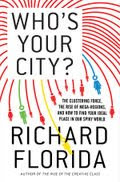People always ask what creativity blogs I read on a regular basis. So I’ve put together a brief list to answer that question.
Creative Perch
Dee Wilcox is the author of this blog that has the simple goal to inspire creativity and encourage innovation. I love Dee’s ability to balance practical creativity tips with real life examples of public art, especially guerrilla art.
The Fertile Unknown
This blog written by creativity consultant extraordinaire Michelle James explores the process of creative emergence and what that looks like in life and work, especially business.
Applied Imagination
This is the blog I go to when I want to know what’s new in creativity. Steve Dahlberg does a wonderful job of sorting through the latest news on creativity and posting some of the most interesting ideas out there.
Creativity at Work
Looking at the intersection, or interplay, as author Linda Naiman refers to it, between art, science and business is the focus of this informative blog.
Life Unfolds
Jennifer Lee is a self-described Certified Coach, Writer, Leader, Artist, Yogini and Musepreneur. Her colorful and always creative blog chronicles her personal journey of creative expression.
- Check out my bookshop for more of my favorite creative reads.









.jpg)
